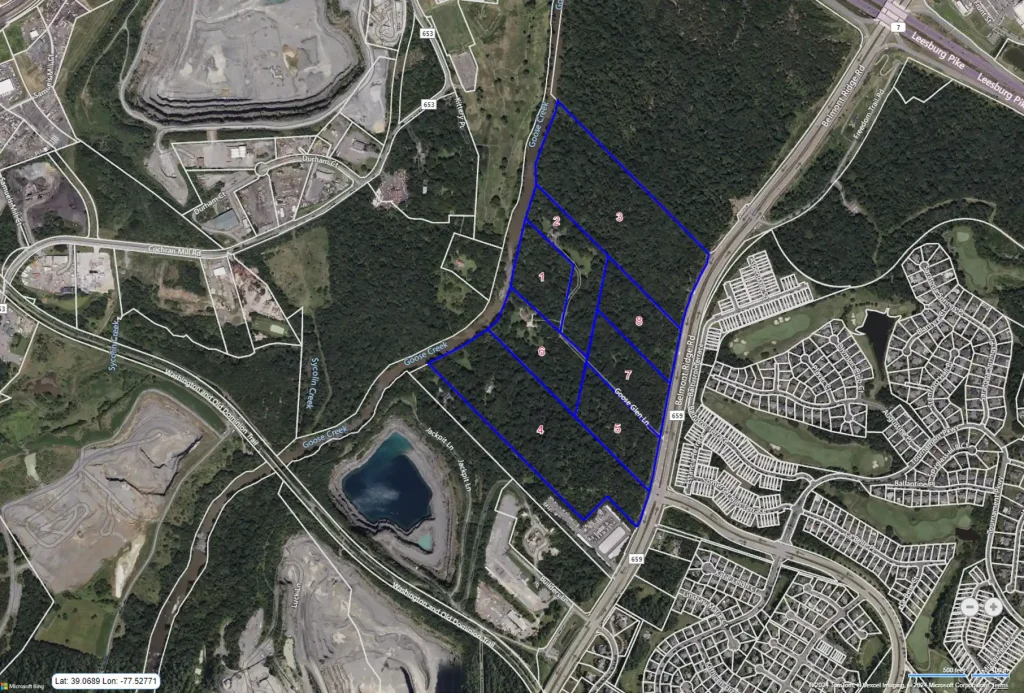As the exponential growth of digital businesses and AI continues to surge, the landscape of data centers is shifting. New markets are emerging with more hyperscale data centers coming on the scene. These expansive facilities typically span multiple acres and are engineered to support the immense demands of cloud computing and deliver high-speed connectivity. Estimates are that the hyperscale data center market size will grow at a compound annual growth rate of 26.93% through 2028 according to Data Bridge Market Research. Commercial real estate brokers, investors and developers are getting creative where they locate sites for these new facilities with zoning regulations playing a crucial role in shaping the data center development landscape.
Power Availability puts Land Use in the Cross-Hairs
Traditionally situated in commercial or light manufacturing areas with minimal natural and man-made risks, data centers are now venturing into new market locations with ample land and power availability, challenging long-standing land use zoning. According to Cushman & Wakefield’s 2024 Global Data Center Market Comparison Report, while Northern Virginia still takes the top spot, development has expanded to farther outlying areas due to land and power constraints.
Power availability is the number one consideration for data center operators as they conduct site selection to keep up with the rapidly growing demand, according to the C&W report. Developers now seek larger parcels of land with substantial power capacity, often ranging from 100 to 300 acres with 500 megawatts or more.
The strain on the local power grid is the reason one proposed data center faced rejection for its rezoning application in Loudoun County, Virginia. The proposed Belmont Innovation campus was originally planned to comprise 2.9 million square feet before the applicant scaled down its square footage to 1.3 million – a size that still doubles the acreage available for industrial data center development. Initially denied, the County Board opted to reconsider its decision following the applicant’s request, ultimately granting approval during a public hearing on April 10th. This decision effectively grandfathered the project under the old zoning ordinance, facilitating its progression.

The county already has more than 30 million square feet of operational data centers, according to Loudoun County Economic Development and late last year, the county adopted a new zoning ordinance which introduced new data center regulations requiring approval of a Special Exception to develop data centers on land zoned to the Office Park – OP zoning district as well as increased requirements for façade treatments and setbacks from residential uses.
Hyperscalers Push into Secondary Markets
Hyperscalers like Google and Amazon Web Services (AWS) are taking the lead on bursting into new markets in the Midwest and in the southern U.S., a region that has seen comparatively little data center development outside of major cities like Dallas and Atlanta. Two examples of the move to these markets are AWS’ $10 billion investment in data center campuses in Mississippi, and an unnamed Fortune 100 company moving into Fort Wayne, Indiana. Both represent regions that have previously been overlooked in the data center landscape.
In the Fort Wayne case, the undisclosed organization is planning a 772-acre campus between two Indiana cities Fort Wayne and New Haven, Wane.com reported. For the application to be approved, the county had to vote on rezoning 800 acres of agricultural land to business, technology and industrial park, and agree to annex 728 acres of land that sits in Allen County and the City of New Haven to be effectively moved into Fort Wayne City limits. Along with the annexation, the firm is asking for a waiver permitting a maximum ornamental fence height of up to 8 feet.
In another example, the partnership between Microsoft and OpenAI is propelling forward with plans for a monumental $115 billion artificial intelligence supercomputer campus, according to The Information — it is anyone’s guess where it will land (perhaps near the Microsoft campus in Mount Pleasant, Wisconsin).
Some Municipalities Address the Demand with Zoning Changes
While historically data centers have rarely been mentioned by name in local zoning ordinances in the U.S., some municipalities are taking a proactive approach to revise zoning regulations to accommodate or manage the burgeoning demand.
In Prince William County, Virginia, which is home to a thriving data center ecosystem, the city has established a Data Center Overlay district and in late 2022 amended its Comprehensive Plan to introduce a new Digital Gateway Zone, reported Silver Linings Info. These include policies that require setbacks, encourage visually interesting exterior designs as well as screening and landscaping for data centers that are “visible from incompatible uses” like residential areas, and enforce noise-limiting regulations.
Across the country in Chandler, Arizona – about 35 minutes from Phoenix – the city has implemented new rules restricting data center development and noise. The data-center ordinance went into effect in 2023, designating facilities that operate with a primary use as a data center to only be permitted in planning area development (PAD) zones.
What Next?
The surge in data center development will continue to drive both the site expansion into new markets and the tensions in some adjoining communities. Data center development advocates point to benefits for the community: job creation, boosted tax revenue, and infrastructure development while opponents believe communities are committing themselves to expensive infrastructure and negative environmental effects on neighboring areas. Municipalities that clarify existing zoning requirements for data center development will gain the attention of builders and developers seeking new sites.
As data center development continues and expands into new territories, the issues around supporting infrastructure and zoning regulations will come more into focus.
